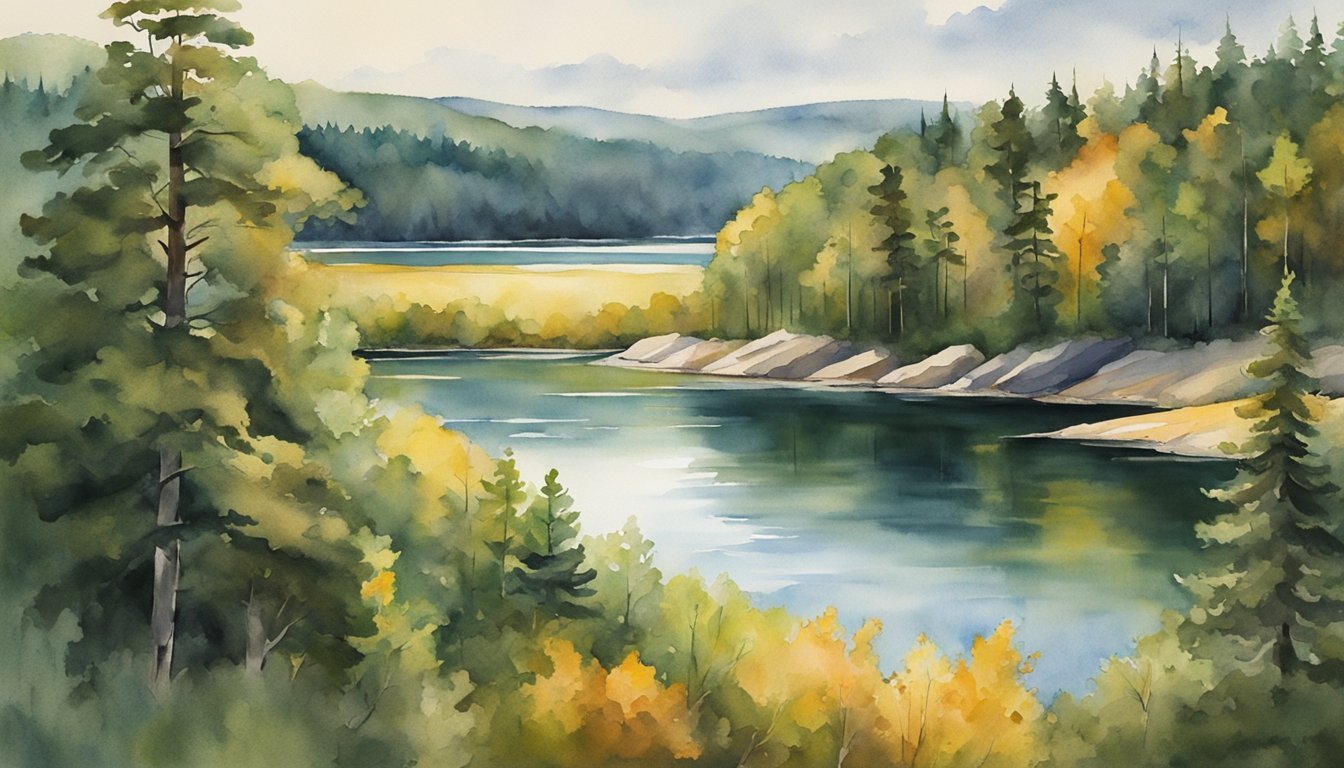Geography and Nature

Minnesota’s geography is as diverse as its cultural heritage, with a landscape that is punctuated by numerous lakes, expansive prairies, and distinct natural features that define the North Star State. This section dives into the prominent characteristics that make up the state’s geography and natural environment.
Land of 10,000 Lakes and Natural Features
While Minnesota is commonly known as the “Land of 10,000 Lakes,” in reality, the state boasts nearly 11,842 lakes over 10 acres in size. From the large and well-known Lake Superior—one of the Great Lakes, to smaller, secluded bodies of water scattered throughout the state, these lakes are central to Minnesota’s identity and its ecosystems.
The Mississippi River, one of the most iconic rivers in the United States, begins its journey in Minnesota, winding 680 miles through the state. This river is a crucial waterway for commerce and transportation, as well as a key habitat for numerous species.
Minnesota is not all water; the state also features varied landscapes. The Red River Valley in the northwest is fertile and flat, a stark contrast to the rugged cliffs and hills of the northeastern region, which includes the state’s highest point, Eagle Mountain. The remnants of ancient glaciers are evident in the rolling hills and moraines found across Minnesota’s terrain, contributing to the state’s rich agricultural heritage, especially in the prairie regions.
Nature and wildlife thrive throughout these environments, supported by the diverse topography and the abundance of fresh water. The state is home to a wide range of wildlife species, from the common gopher—a nod to Minnesota’s nickname, the Gopher State—to the majestic bald eagles that are often spotted soaring above the state’s many waterways. These various ecosystems also accommodate hundreds of bird species, fish, mammals, and plant life, making Minnesota a veritable paradise for nature enthusiasts and biologists alike.
What Unique Aspects of Minnesota Can Be Compared to Interesting Facts About Iowa?
Minnesota boasts its vibrant lakes and cultural festivals, but for those seeking a deeper exploration, it’s essential to discover iowa’s unique treasures and fascinating history. From the iconic bridges of Madison County to the golden cornfields, Iowa offers a distinct charm that beautifully complements Minnesota’s scenic landscapes and rich traditions.
History, Culture, and Economy
Minnesota’s tapestry weaves together a rich history with a diverse cultural backdrop and a robust economy. From the early days of fur trading to a modern hub of industry and commerce, the state’s past is intrinsically linked to its present economic prowess and cultural landscape.
From Early Settlement to Modern Development
Minnesota, known for its nickname as the North Star State and the Land of 10,000 Lakes, was once the frontier for exploration and trade. European settlers like Pierre Esprit Radisson and Daniel Greysolon began the exploration of the region for France, and the area’s history as a fur trading center with the Dakota Sioux tribes soon gave rise to trading posts like Fort Snelling. After a period as part of the Louisiana and Michigan territories, Minnesota’s path to statehood was secured when it became the 32nd state of the Union on May 11, 1858. It shares borders with states like Iowa, Wisconsin, South Dakota, and North Dakota, positioning it centrally in the Upper Midwest’s network of trade and commerce.
Since its early days, Minnesota has transformed from a heavily forested wilderness to a bustling nexus of industries. The state’s economy is sustained by significant sectors such as iron ore mining, visible in the vital port city of Duluth, and agriculture with crops such as corn. It is also home to corporate giants like 3M and a network of skyways that make up part of its distinctive architectural features. Minnesota’s area, encompassing about 86,935 square miles, now supports a population that has grown steadily to over 5.6 million residents.
Cultural Significance and Economic Outlook
Minnesota’s cultural roots run deep, influenced by a mosaic of Irish, German, Scandinavian, and Native American heritages. This rich cultural tapestry is reflected in the state’s contribution to the arts, with legends like Prince and Bob Dylan hailing from Minnesota. The Minnesota River, another key historical marker, is named for the Dakota word meaning “cloudy water,” indicative of the state’s connection to its indigenous people.
The state’s cultural fabric is woven into its thriving economy, which is as diverse as its population. Education and innovation are central themes, with the state’s educational system fostering a well-informed and skilled workforce. The Mall of America in Bloomington, serving as a vast shopping and entertainment complex, attracts millions of visitors each year, cementing Minnesota’s role as a Midwestern cultural hub.
The loon, Minnesota’s state bird, symbolizes the natural beauty that draws visitors and the Minnesotan alike to its vast network of lakes and outdoor activities. The state remains a hotbed of cultural exchange and economic vigor, holding the state motto “L’Étoile du Nord” or “Star of the North” as a nod to its history of guiding settlers through the region and its continued status as a guiding star in the Midwest’s economy. The economic outlook remains positive as industries continue to diversify, and the state maintains a reputation for high standards of living and education.

